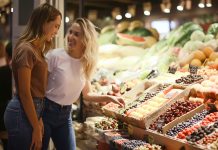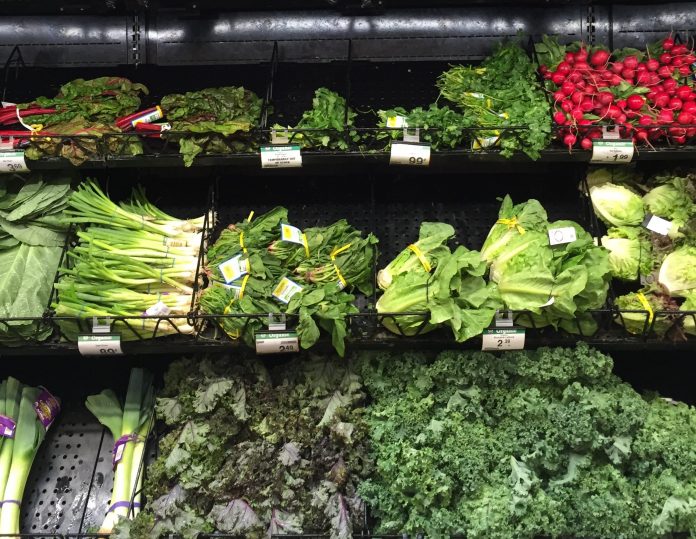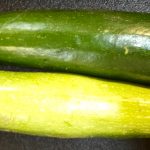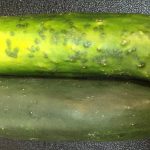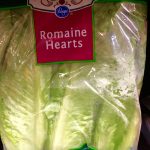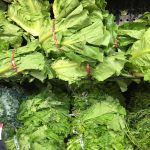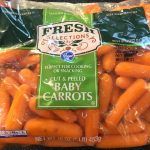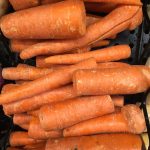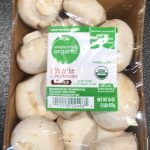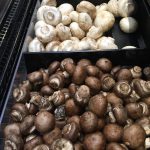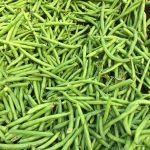Two of the most common complaints from people who are trying to eat healthy are “it’s too hard” or “I don’t know how”. Frankly, these two issues would stop even the most dedicated from doing the most simple. This is particularly true with vegetables, which we are told to eat lots of. Given modern packaging, marketing, and grocery retail standards, these complaints are legitimate. They should not, however, prevent us from picking and ultimately eating our fresh vegetables.
When we live in smaller households the selection problem magnifies. It is just hard to buy lettuce, cucumbers, potatoes, carrots, onions, summer squash, green beans, broccoli, cauliflower, and other staples of the healthy pantheon without either feeling overwhelmed by the quantity offered or being overwhelmed by the bountiful bins of produce. Bags of vegetables are too big and most of us instinctively know that anything bagged and pre washed can’t possibly be all that “healthy”.
So how do we do it? How do we walk into the market, with its dizzying array of fresh, local, organic, GMO free, sometimes bagged, pre-washed, not pre-washed, cut up, whole, peeled, baby, “new”, and a whole variety of other nebulous terms floating in and around the produce section and pick out a carrot? Here are a few basic and easy to follow rules to get started enjoying fresh vegetables in your diet.
- Looks matter. Yes, we want to believe that it is what is on the inside that counts in each of us but when it comes to vegetables looks tell us a lot. If a cucumber looks grayish and wrinkled, if a carrot looks yellow and whitish rather than orange, if a zucchini looks like it has recently been in a prize fight, there is a good chance these vegetables are past their prime. In other words, if the vegetable doesn’t look like what it is supposed to, don’t buy it.
A good and bad comparison of summer squash A good and bad combo of zucchini A side by side comparison of cucumbers - Buy Naked Vegetables. There has never been, in the history of agriculture, a vegetable that comes off a tree or from the ground wrapped in plastic. Packaging is for the convenience of the retailer, not the buyer. Packaging makes things stack better and prevents “damage” from the multiple times a vegetable is handled during the selling process. However, it also prevents us from really looking at the vegetable. Yes, most prepackaged vegetables are less expensive. However, they are rarely worth the cost savings. This extends to bags as well. True, five pounds of potatoes is cheaper than the individual bins. However, for our size household we really don’t need the 5 pounds and the bins are better.
Lettuce doesn’t naturally come in a bag Loose lettuce rather than packaged is in all respects better Ready to eat anything is simply not as good veggies in their original “packaging” Bin carrots. Bunched are better but these are way better than “ready to eat” Packaged mushrooms. They are placed that way for a reason Mushrooms in a bin are more expensive. However, we can get what we want and what we need rather than buy a package Anything that has been through a packaging process is hardly as “fresh” as something loose Bin and loose green beans. Worth the extra effort - There is no place like home. One of the great blessings of modern life is food shipping. We can actually get avocados that are worth eating anywhere in the world. However, when it comes to day to day buying of vegetables, seek out local sources. Besides the obvious advantage of local being fresher, there is also the idea of carbon and energy footprint to consider. If we get at least some of our produce locally we should. Less gas, less carbon emissions, healthier product. It is not always possible and many things may not be produced in our area but we can still try. Also, the more we support local growers the more they will grow which means the more we get to choose from. In other words, a “win-win”.
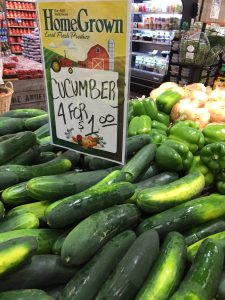
The Anderson’s is finally getting in summer crop local grown produce - Dirty is better. Vegetables do not come off the vine, out of the ground, or off a tree clean. They have dirt on them, which is good. Things like cleaning, pre-washing, peeling, cutting, and other prepping steps may be convenient but they indicate processes that we have no control over and ultimately degrade the freshness of the produce. After all, it takes time to do all that which lengthens the time it takes to get from the ground to your plate. In short, we can wash and peel and cut our own vegetables. It is better all around.
- What is in a name. We have all seen words like organic, fresh, non GMO, certified, and even “local” printed throughout the produce section. And we know that these labels tend to make things more expensive. So, how do we know, really KNOW what these labels mean? The answer is to do a little research. Look at the end of the article to get resources on labeling and processing. Above all, ask
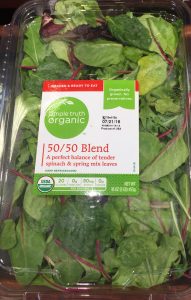
Organic? Non GMO? Yet still packaged. More of a trade off than a quality surge the guy or gal in the the produce section. Of course they may not know but chances are, especially at our local markets, they will be quite knowledgeable about where their products come from. Like in the deli or meat department, it pays to get comfortable asking questions.
- Shop early and often. Unlike this sayings corrupt political cousin (vote early vote often) when it comes to vegetables this is a good idea. The sooner you can get to the produce after it comes off its truck the better. In farmers markets this means right when it opens. In smaller markets you will just have to ask. If you are
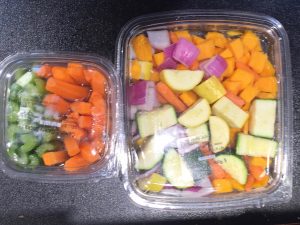
Pre cut, ready to use veggies are a significant step down from prepping your own shopping out of bins you want to get to the produce before it has been over handled by multiple shoppers. As for shopping often, if you are going to use fresh then use fresh. Since we are only shopping for one or two, quick trips to the market are better than one big trip when in comes to produce. Yes, there are a variety of techniques for keeping produce “fresh.” Regardless of these methods, every day away from the vine, ground, or tree our produce grew on makes it less “fresh.” A fancy storage device can only slow, not stop the process. So, shop early and often.
Above all experiment with fresh instead of packaged and frozen. Most vegetables will tolerate sauteing, stir frying, or even grilling (one of those grill ready baskets is perfect for this). Frozen is certainly an alternative, especially in things like broccoli, cauliflower, peas, brussel sprouts and potatoes. In other things, like carrots, any of the summer squashes, green beans, onions, peppers, and asparagus, frozen is not all that tasty and the texture is pretty bad. These items always have a fresh component available so there is no excuse not to use them. We won’t even dignify “canned” with comments.
Finally, don’t be fooled by so called convenience. In our size household, because we are only cooking for one or two, it is best to seek fresh alternatives for everything. Bagged salads, pre cut celery, ready to microwave green beans, pre cut stew and soup vegetables, and the ever popular ready to eat “baby” carrots are simply NOT the same as fresh. If we have lots of mouths to feed in a short time they are fine. However, when living solo or in pairs, we can loose the bags and cans and get back to eating the way our ancestors did…right out of the ground.
For Further Information click on the links below.*
Definition and requirements of organic
*Links that are provided are for information only and do not constitute in any way an endorsement of the organizations or practices talked about inside of the linked web sites b Right Size Publishing, LTD. As with all things on the web, personal vetting of the site and information provided is mandatory for a successful understanding of any issue.


